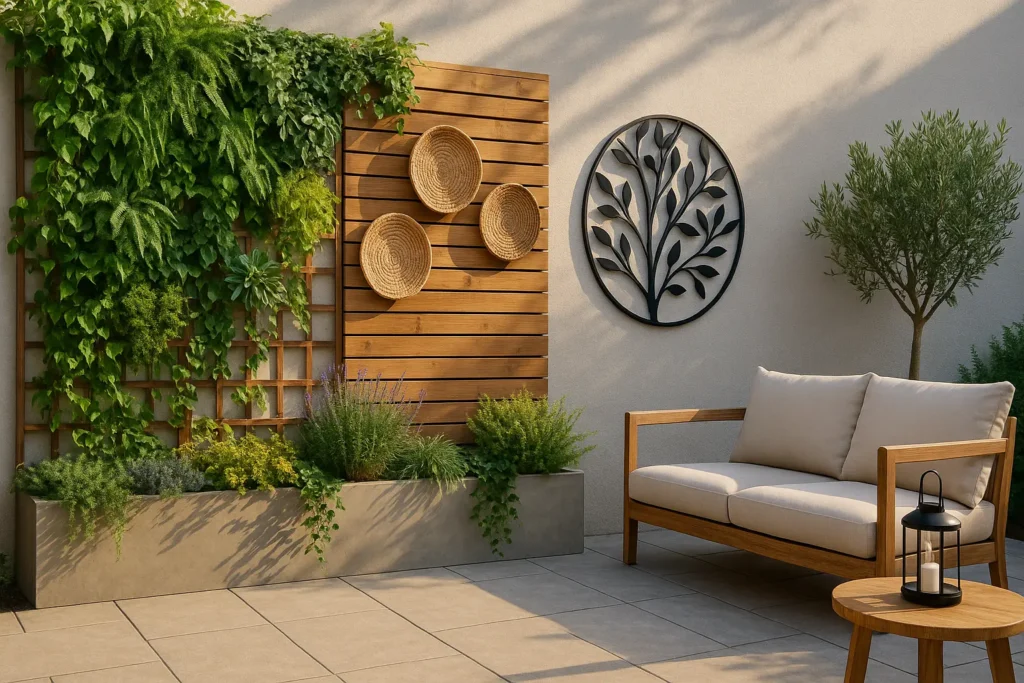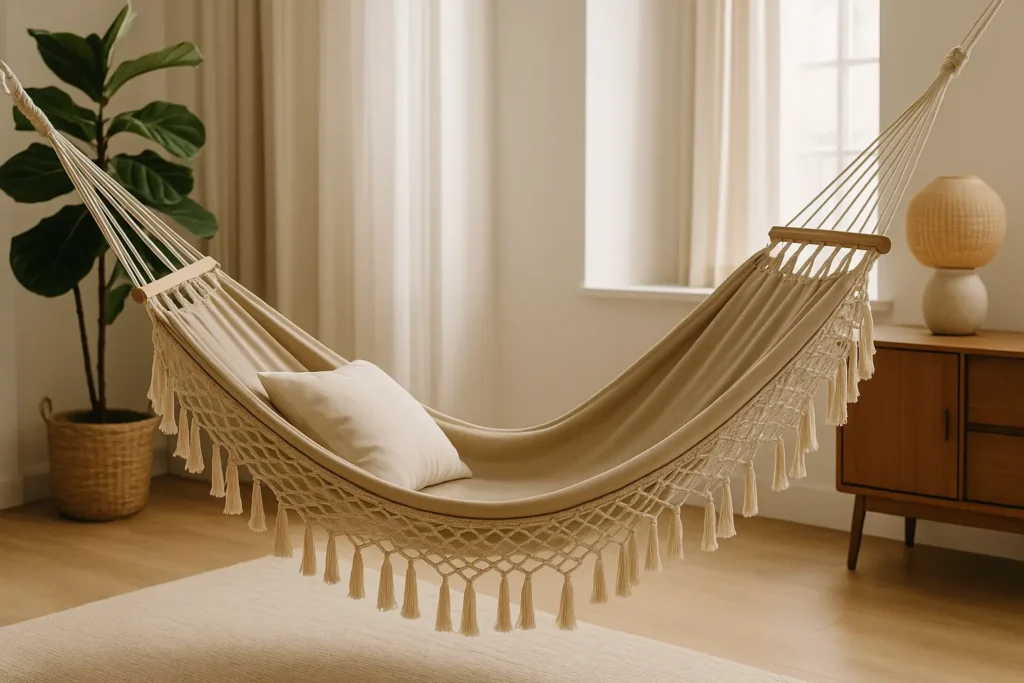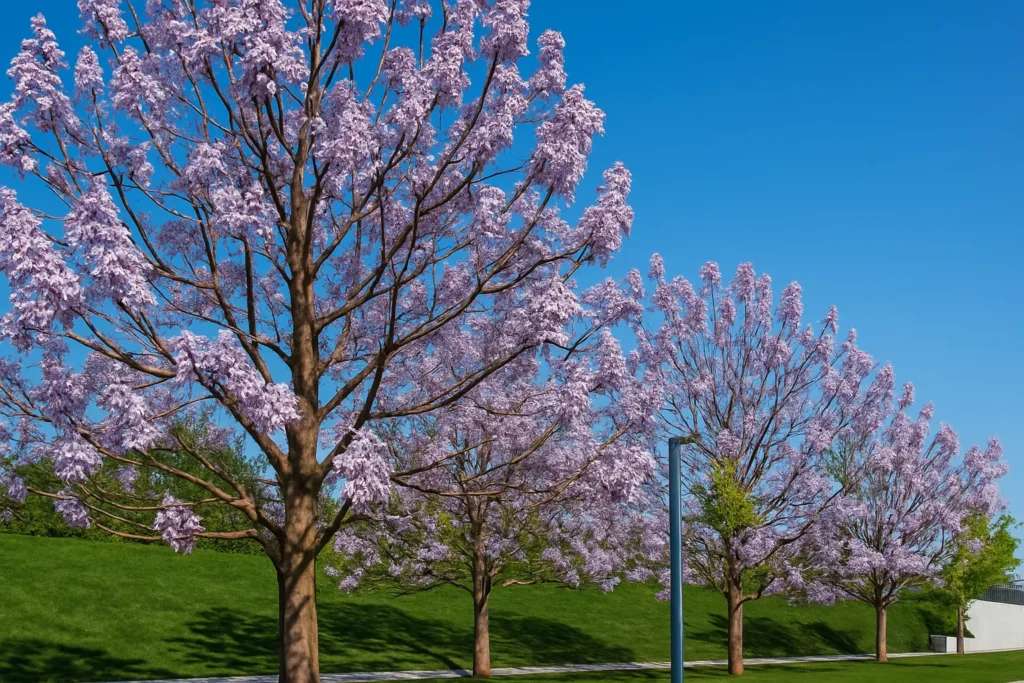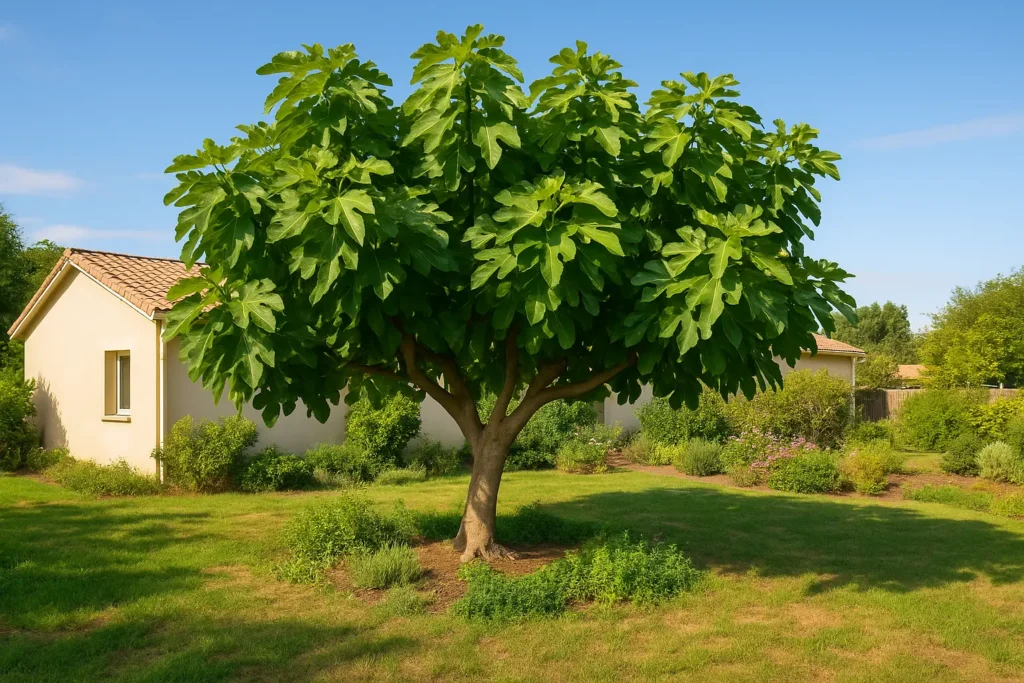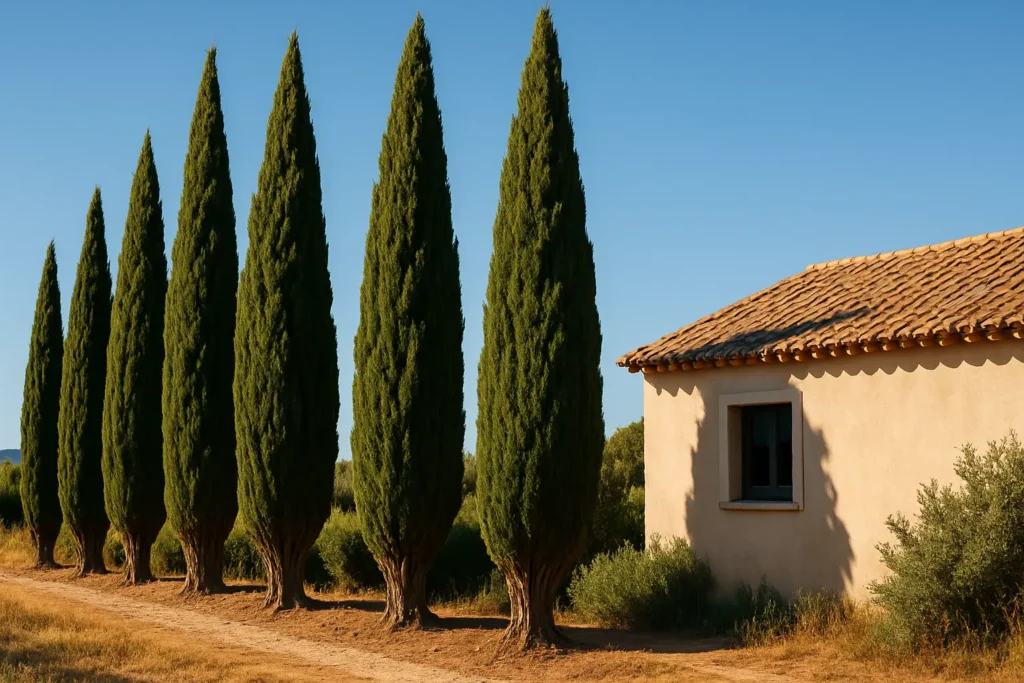The trumpet vine (Campsis radicans) enchants our gardens with its elegant, colorful trumpet flowers and its ability to quickly adorn pergolas and low walls. This exotic climber offers an undeniable charm that takes us on a journey. However, behind this floral beauty lie considerable challenges for the design of our outdoor spaces. Before succumbing to its spectacular flowers, here are the five disadvantages of trumpet vine which deserve consideration to create a harmonious and balanced garden, without unpleasant surprises.
Our article in brief:
The trumpet vine or Radicans campsis is attractive for its orange, yellow or pink trumpet-shaped flower but has major drawbacks that deserve consideration before planting. Here are the main disadvantages of the trumpet vine:
- Invasive growth : up to 1 meter per year, reaching 12 meters in height in a few seasons
- Extremely invasive root system, producing suckers up to 10 meters from the main foot
- Structural damage to buildings by its powerful adhesive crampons which seep into cracks
- Interview time-consuming requiring regular pruning and constant monitoring
- Almost-impossible to eradicate once established, with regrowth for several years
Summary
Uncontrollable growth
The trumpet vine or Campsis radicans stands out thanks to its impressive vitality which can quickly transform your haven of peace into an uncontrolled jungle. Its rapid growth easily reaches one meter per year, allowing it to climb up to 12 meters in height in just a few seasons. I recently visited a garden where a trumpet vine planted at the base of a simple arbor had completely overgrown the roof ridge in just six months!

This is one of the first drawbacks of trumpet vine. Indeed, without constant monitoring, this plant takes over the available space with remarkable determination. It gradually smothers neighboring plants, depriving your other botanical treasures of light and nutrients. Its vigorous branches creep into the smallest gaps, clogging gutters and obscuring windows over the seasons. This natural exuberance requires careful support to maintain the balance of your outdoor space.
An invasive root system: an underground danger for your garden
If the above-ground part of the bignonne is impressive, its underground network deserves our attention just as much. Creeping roots extend up to 10 meters from the mother plant, creating a veritable invisible labyrinth underground. The disadvantage of the trumpet vine in this case is that its root system produces tenacious suckers that sometimes emerge several meters from the main plant, appearing in the middle of a neat lawn or among your favorite perennials. To summarize, here are the major disadvantages of the trumpet vine in this context:
- Appearance of spontaneous shoots up to 10 meters from the main plant
- Root competition with other plants in the garden
- Progressive depletion of the surrounding soil

This propensity to colonize underground space can even lead to neighborhood tensions when the suckers cross the boundaries of your property. The vigorous roots of the trumpet gradually weaken other plants by depriving them of essential nutrients, creating an ecological imbalance in your green setting.
The disadvantages of trumpet vine on the structures and buildings of your house
How Radicans Campsis Attaches to and Damages Surfaces
Like ivy, trumpet vine clings firmly to surfaces with its remarkably strong adhesive grips. This exceptional adhesion capacity transforms walls into ideal growth supports, but also poses a threat to the integrity of structures. The crampons infiltrate the smallest cracks, gradually widening them over the seasons.

Facades with light-colored render risk becoming stained, while tiles can be lifted when branches reach the roof. Shutters and skylights quickly become trapped by this invasive vegetation. To preserve the architectural harmony of your home, favor the installation of dedicated supports such as trellises or sturdy pergolas, kept away from the walls.

Maintaining the trumpet is demanding and time-consuming
Planting a trumpet vine involves a substantial commitment in terms of maintenance. Annual pruning is an essential operation to maintain this climbing plant in harmonious proportions.This intervention, ideally carried out at the end of winter before the vegetation restarts, requires suitable tools such as powerful pruning shears, or even a lopper for high branches.
| Maintenance frequency | Type of intervention | Disadvantages if neglected |
|---|---|---|
| 1-2 times a year | Structure size and control | Rapid invasion and reduced flowering |
| Regularly | Monitoring suckers | Uncontrolled spread in the garden |
| After flowering | Cleaning up fallen flowers | Accumulation of plant waste |
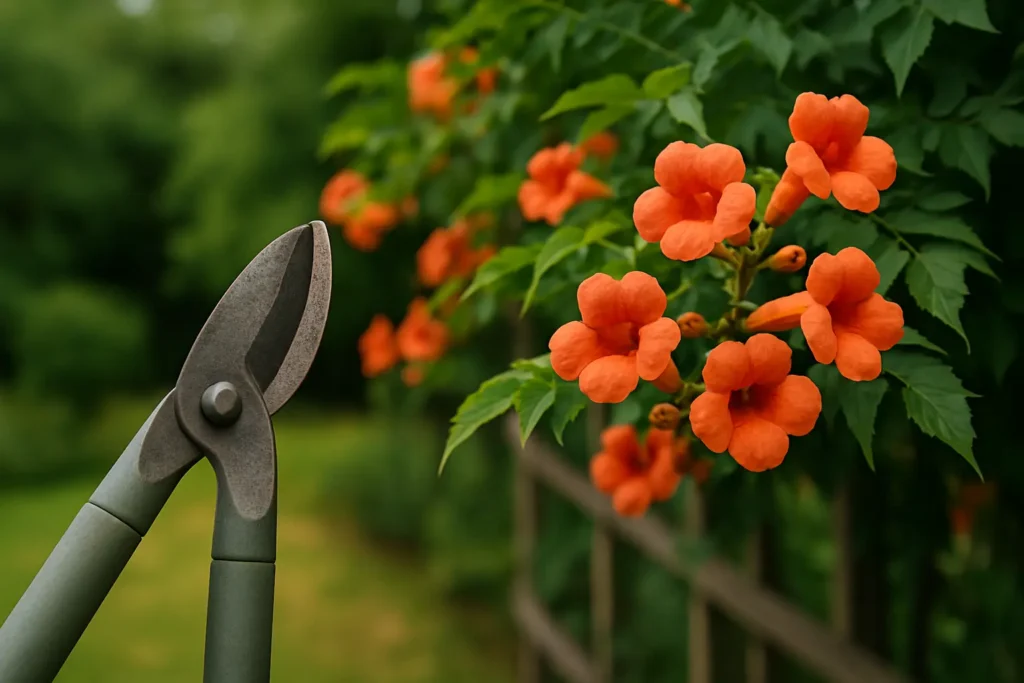
Without these regular interventions, the plant quickly becomes bushy and untidy, its flowering becomes poorer and the whole loses its elegance. Sometimes just one summer of inattention is enough to turn your graceful climber into an unruly invader., then requiring hours of work to regain a controlled appearance.
The trumpet vine: a persistent plant that is almost impossible to eradicate
If you ever want to get rid of your bignonne, prepare yourself for a real challenge. The exceptional tenacity of this plant makes it one of the most difficult to completely eradicate from the garden. Even when cut to ground level, it grows back vigorously from its base and its network of persistent roots. This is therefore one of the most restrictive disadvantages of the trumpet vine because behind it you must:
- meticulously pull out all visible roots
- monitor your carefully garden for 2 to 3 seasons to eliminate regrowth
- potentially repeatedly treat affected areas

A passionate gardener recently told me that three years after removing her trumpet vine, suckers continued to appear in different areas of her garden. This remarkable persistence testifies to the extraordinary vitality of this climber, transforming what seemed like a simple landscape change into a long-term project.
Wiser alternatives to Campsis radicans to beautify your garden
To enjoy the beauty of climbing plants without their major drawbacks, several alternatives are worth considering. THE star jasmine offers evergreen foliage and an intoxicating fragrance, ideal for creating a soothing Mediterranean atmosphere. Its more moderate growth facilitates its harmonious integration into small spaces.
There clematis seduced by its sumptuous flowers in varied colors, adapting to different exposures while remaining in reasonable proportions. Climbing hydrangea is an elegant option for shady areas, providing volume and structure without becoming invasive. Its shimmering foliage offers a spectacle that changes throughout the seasons. Here are other alternatives if you want to protect yourself against the disadvantages of bignoge:
- Climbing rose for romantic flowering and easier to control structure
- Glycine for spectacular flowering with a less invasive root system
- Honeysuckle for its captivating fragrance and more moderate growth
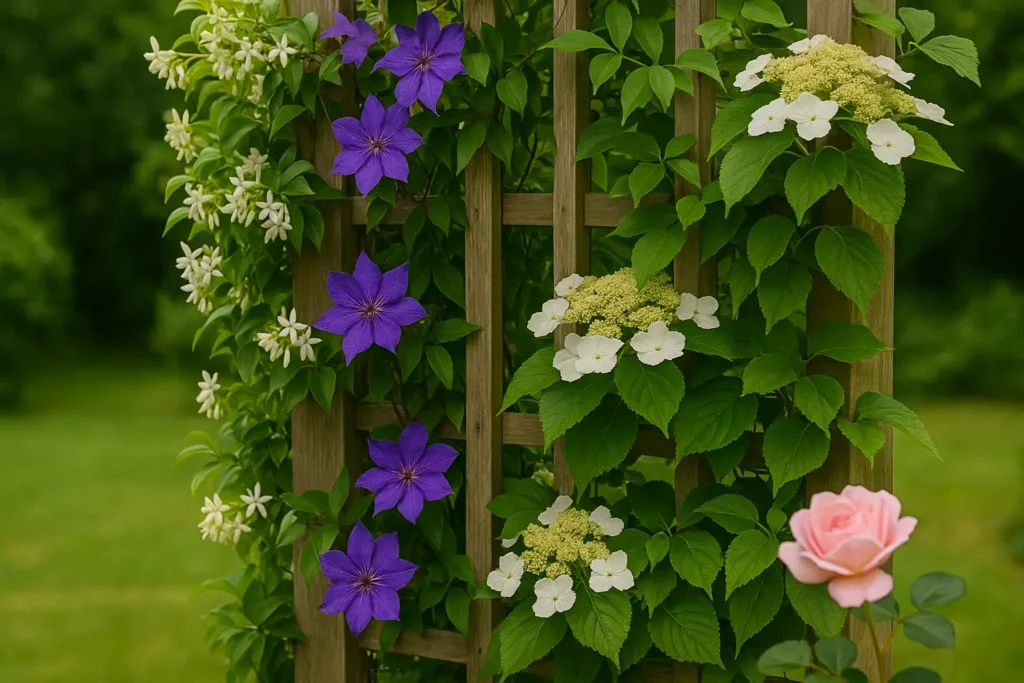
For die-hard Radicans campsis fans, choose more compact varieties grown in pots or install rhizome barriers to contain its underground vigor. Keeping it away from sensitive structures and keeping a close eye on it will allow you to enjoy its beauty without suffering its excesses.
FAQ – Everything you need to know about trumpet vine (Campsis radicans)
What are the different colors of trumpet vine flowers?
Radicans campsis comes in several colors depending on the variety:
– Orange Bignone : the most common, with brightly colored trumpet-shaped flowers.
– Red Bignone : rarer, it brings a touch of intense warmth to the garden.
– Pink Bignone : with softer tones, it evokes a romantic atmosphere.
– White bignone : delicate and more discreet, it is ideal in association with other climbers.
– Blue Bignone : often confused with other plants like thunbergia, but it does not exist not real blue trumpet vine to this day.
Is trumpet vine a poisonous plant?
There bignone is not classified as toxic in the strict sense, but its sap can cause skin irritations in some sensitive people. It is better to wear gloves when pruning of bignonias, especially if you have reactive skin.
Can you grow trumpet vine in a pot?
Yes, cultivate a potted trumpet vine is possible, especially if you opt for a compact variety. This allows for better control its growth and limit the expansion of its invasive root system. Choose a deep and stable pot, and offer him a solid support to climb.
Is there a tree trumpet vine?
There is no trumpet vine tree naturally, but you can form a bignonne on stem using a rigid stake and regular pruning. This gives the illusion of a small flowering tree, ideal for small gardens or terraces.
When to plant a trumpet vine?
It is better plant trumpet berries preferably in spring, when the risk of frost has passed. This allows it to root well before winter. Choose a sunny, well-drained location.
When to prune trumpet vine?
There trumpet vine size must be carried out at the end of winter, between February and March, before the start of vegetation. This pruning helps to stimulate flowering and control its development
What is the difference between a trumpet vine and a vicuña plant?
There is no plant called "vicuna" in the current horticultural register. This may be a confusion or a typo around the word bignonne. There trumpet vine is well known for its spectacular flowers and rapid development
What is yellow radicans?
The term yellow radicans designates a variety of Campsis radicans with yellow flowers. Less common than the orange trumpet vine, it brings a bright and sunny touch to the garden while maintaining the same growth characteristics.
What is the difference between Campsis radicans and Tecoma?
Campsis radicans is the real one bignone rustic, while Tecoma capensis, often called "Cape trumpet vine," is another tropical species, less hardy and more suited to mild climates. They are similar but do not have exactly the same requirements.
